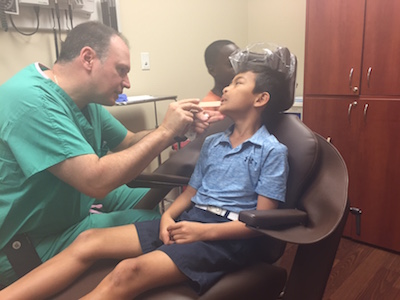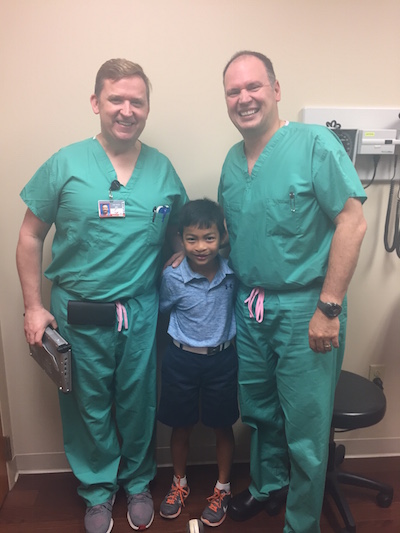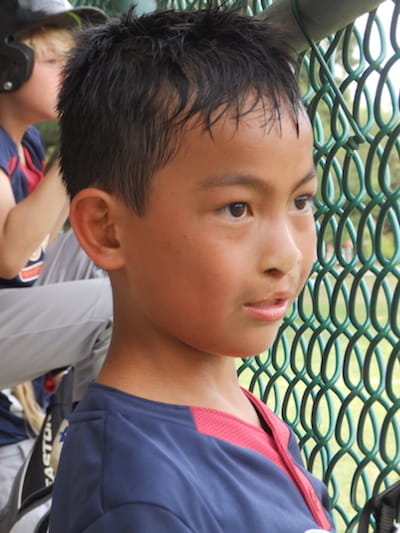If your child has been diagnosed with cleft lip or palate, here’s what you need to know
You may be surprised to learn that cleft lip and cleft palate are among the most common birth defects in children born in the United States, occurring in about one in every 600 to 700 births. The good news for families who find themselves faced with a diagnosis is this- while a cleft lip or palate requires ongoing medical care throughout childhood and into adulthood, the condition is highly treatable and children go on to lead normal, healthy lives.
It’s important to note, however, that proper care for your child requires a team of highly specialized medical professionals with a variety of expertise for medical, surgical, dental and social concerns. One of the critical elements that you will need is coordination and communication between the different specialists in order to provide the best outcome.
Let’s dive in and learn more about this relatively common, yet very treatable problem, and what every family receiving this diagnosis should know.
What is a cleft lip and cleft palate, and what’s the difference between the two?

A cleft lip will be visible, affecting the baby’s upper lip. It can range in size from a small gap to a large opening that extends upward into the nose. The opening can occur on one or both sides of the lip, rarely occurring in the middle. The cleft lip forms sometime around the fifth week of pregnancy, before many women even know they are pregnant. A cleft palate occurs a little later, around the ninth week of pregnancy, and can involve all of the palate or only part of it.
Facial clefts can sometimes be diagnosed prenatally with an ultrasound – roughly 20 to 30% are now found this way. Cleft lip is diagnosed more often before birth since the lip is easier to see on ultrasound than the palate.
What will your healthcare team look like?

Whether a diagnosis is made before birth or shortly after, parents should quickly receive a consultation from a cleft and craniofacial team of experts. Often a cleft palate will impact the baby’s ability to feed, making it important to get help early.
Beyond your primary care physician, you will need a team with many of the following specialists (depending on the individual needs of your child):
- Audiologist
- Feeding Specialist
- Geneticist
- Genetic Counselor
- Neurosurgeon
- Nurse Coordinator
- Occupational Therapist
- Ophthalmologist
- Orthodontist
- Otolaryngologist (ENT Surgeon)
- Pediatric Dentist
- Pediatrician
- Social Worker
- Speech and Language Pathologist
As you can see, you will need a large team with a variety of specialized skills to help you address the many aspects of your child’s development that can be affected. This interdisciplinary approach offers our patients and their families education and support in addition to treatment options.
A general timeline of your child’s treatment
While each child’s needs are unique, specialists in cleft care follow a general pattern to care for facial clefts throughout childhood. Interventions will need to take place at specific times based on your child’s ongoing growth and development. Below you’ll find an overview of what happens at various ages and stages.
Birth to 3 months
- Diagnosis and comprehensive medical evaluation
- Establish a pediatric primary care home
- Referral to cleft surgeon
- Focus on feeding and weight gain with involvement of speech therapy/occupational therapy as needed
- Newborn hearing screen
3 to 6 months
- Continue regular pediatric visits
- Continue focus on feeding and weight gain
- Cleft lip repair and primary nasal reconstruction (first surgery)
- Check ears and hearing
9 to 18 months
- Continue regular pediatric visits
- Diagnostic visit with the Orlando Health Arnold Palmer Hospital for Children and Orlando Health Winnie Palmer Hospital for Women & Babies Cleft Palate Team
- Begin to follow speech and language development closely
- Establish a pediatric dental home (first dental visit)
- Cleft palate repair (second surgery). Coordinate examination and possible ear tube placement at the time of palate repair
18 months to 5 years
- Continue regular pediatric visits
- Monitor ears and hearing
- Continue regular dental care
- Closely monitor speech and language development and manage velopharyngeal insufficiency (hypernasal speech) with surgery, when needed
- Lip and nose revision surgery, when needed
6 to 13 years
- Continue regular pediatric visits
- Monitor ears and hearing
- Between 6 and 8 years old, establish an orthodontic home for an initial phase of orthodontic treatment and upper jaw expansion
- Bone graft reconstruction of the upper jaw cleft prior to eruption of permanent teeth
- Continue regular dental care
- Closely monitor speech and language development and manage velopharyngeal insufficiency (hypernasal speech) with surgery, when needed
14 to 21 years
- Continue regular pediatric visits
- Continue regular dental care
- Final orthodontics
- Jaw surgery when needed
- Lip and/or Nasal revision, Rhinoplasty, when needed
- Genetic counselling
- Dental implants/rehabilitation as needed
Additional information about facial differences and their treatment

Learn more about Pediatric Craniomaxillofacial Surgery
To request an appointment, click here, and choose "Pediatric Craniomaxillfacial and Oral Surgery" from the drop down list.







